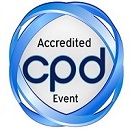
Shashi Sharma
US Food and Drug Administration, USA
Title: Cleavage sensitive antibody for the detection of type A botulinum neurotoxin by biolayer interferometry
Biography
Biography: Shashi Sharma
Abstract
Background: Contemporary technologies and assay methods are being explored continuously for rapid and sensitive detection of biologically active BoNTs in food and environmental samples to facilitate enhanced public health response. Previously, FRET based substrates were used to detect the presence of active BoNTs in samples. However their efficacy to screen food samples and identify serotypes associated with unknown samples is largely limited. In this work, we have evaluated the application of cleavage sensitive monoclonal antibodies (CSM) to detect enzymatically active BoNT Type A using Bio-Layer Interferometry (BLI). CSM are developed to recognize only the neo-epitopes that are generated after the cleavage of target substrates by BoNTs. Methods: BLI platform (Pall Fortebio Octet) was used to evaluate the ability of type-A CSM (CSM-A) to specifically detect the catalytic action of BoNT/A, by measuring its binding to the BoNT/A cleaved fragment of SNAP-25. BLI is a powerful, versatile, rapid and label-free biosensor tool for characterizing the real-time kinetics of binding interactions between ligands and analytes. Full-length His-SNAP-25 (ligand) was coated on the surface of the sensor tips. Toxin and CSM-A (analyte) were placed in 96-well polypropylene plates. SNAP-25 coated sensor tips were then exposed to the wells containing toxin at different concentration (0, 1, 3, 6 and 12.5 ng/ml) and for varying incubation times (30-90 minutes). The loaded tips were then incubated with CSM-A, and the binding activity of the CSM-A was studied. Results: The CSM-A based BLI assay demonstrated concentration and activity dependent binding characteristics and can reliably report BoNT/A enzymatic activity. Notably it required less than 5 hours for sensitive and specific detection of BoNT/A. The preliminary studies showed that CSM-A based BLI assay was able to detect active toxins dilutions in the range of 1 ng/ml (in buffer). Conclusions: CSM show potential to rapidly detect biologically active toxins on the BLI platform. With the development of cleavage sensitive monoclonal antibodies specific to other serotypes of BoNTs, high throughput serotype specific rapid screening assays can be developed. The ability of this platform to detect and quantify the toxin in food samples is currently being evaluated.

